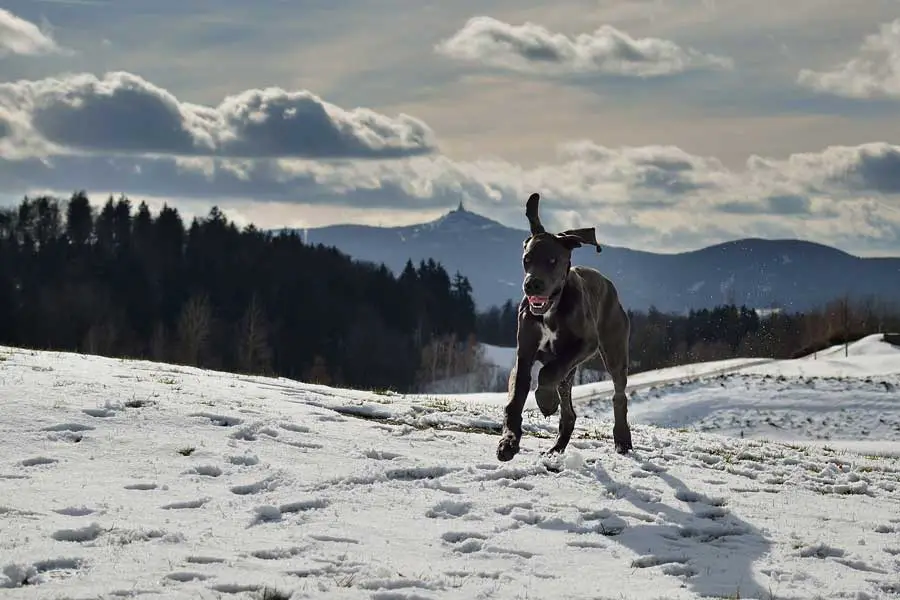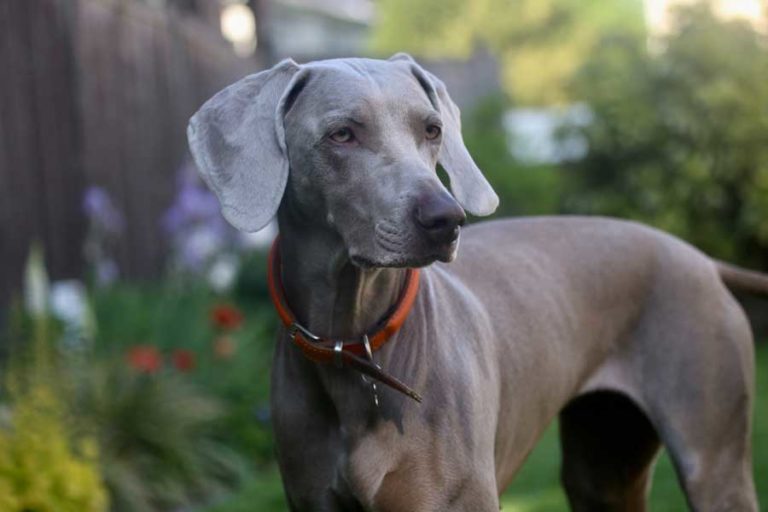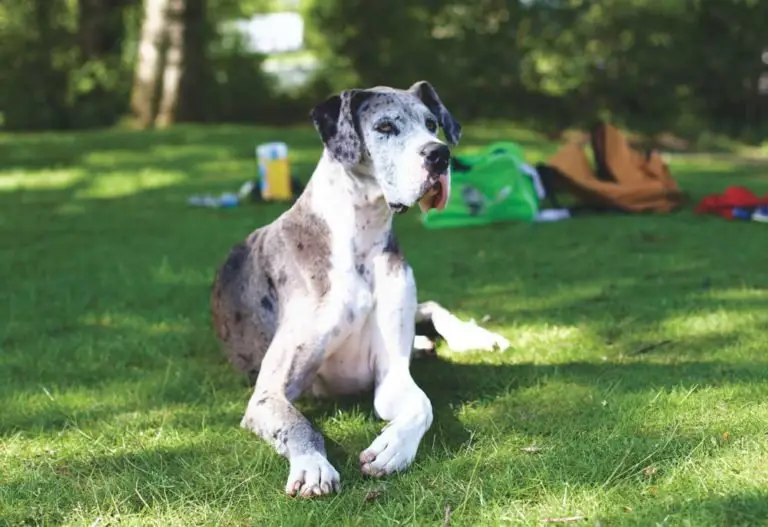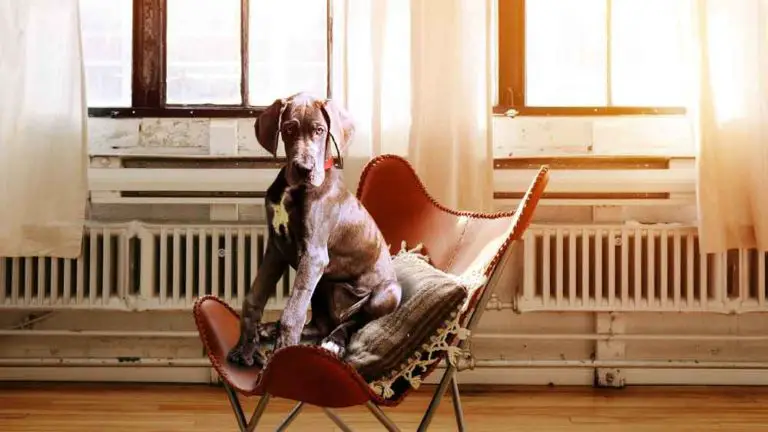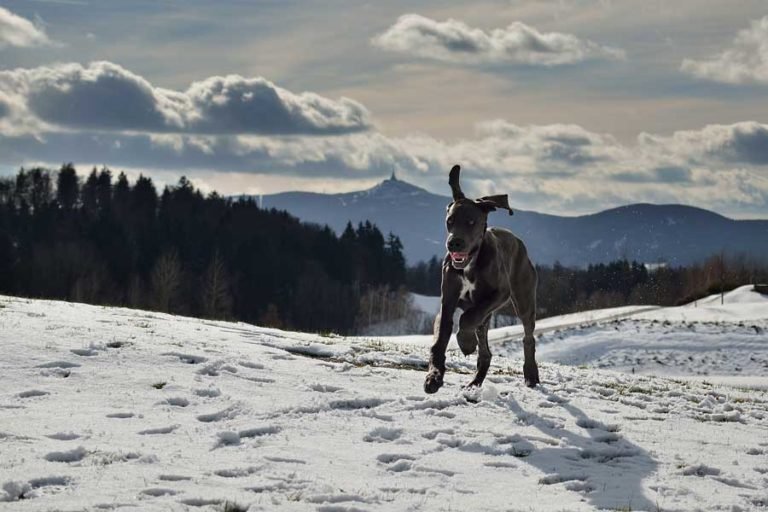Great Danes as Pets: Cost, Life Expectancy, and Temperament
The Great Dane- A name that not only hints of their large size but also of their extraordinary character. Big, brave, beautiful, intelligent, and more. With all these, if you are looking for a pooch that has nearly everything that is expected of dogs, you won’t go wrong with the Great Danes. This dog was originally bred in Germany but currently adored all over the world.
Are you here to know more about this sweet breed? You just made the right move– we have every bit of information you probably are looking for about Great Danes. Yours is to read on!
What Is A Great Dane?
The Great Dane is a giant dog breed that is famously known as the “Apollo of dogs”- with a good reason! It is a muscular breed with a well-developed strong chest and was originally developed for hunting wild boars. The male will stretch to a maximum height of 32 inches and weigh up to 120 lbs. while the female will grow up to a height of 30 inches and weigh as much as the male.
The Great Danes have a very strong neck with floppy triangular ears. The ears, however, were most of the time in the past cropped to stand erect as a way of minimizing chances of injuries when hunting. The tail is medium in size and curves slightly when the canine is alert but falls straight when they are resting.
Also, the Apollo of dogs has a short and glossy coat that is easy to care and will shed a small amount of hair. Additionally, like other canines, the Great Danes come in a wide array of colors. There are seven officially-recognized colors but you may come across others as well. The official colors are fawn, brindle, blue, black, merle, mantle, and harlequin.
Lifespan Of The Great Danes
Normally, large-sized animals are associated with a longer life expectancy than the smaller ones. For instance, an elephant will reach up to about 70 years while a smaller animal such as a rabbit will only live up to 2 years when in the wild. Therefore, being one of the giant breeds, we expect the Great Danes to be among the breeds that live the longest.
Nevertheless, that is not the case when it comes to dogs. The Great Danes, although are large, are among the dog breeds with a very short lifespan. They will live for about 8 years, roughly half the lifespan of the majority of smaller breeds. Nevertheless, some Great Danes will die as early as before they hit the age of 5. Other large dog breeds with a short lifespan include Mastiff (6-10 years), Leonberger (8-9 years), Irish Wolfhound (6-10 years), and many others.
Causes Of Short Lifespan In The Great Danes
The reason behind the very short lifespan of the Great Danes is something that leaves the scientists scratching their heads to date. However, we have several research studies that have been done in an attempt to try and find the answer to what has puzzled researchers and scientists for a very long time.
One of the studies argues that the shorter lifespan of larger dogs is as a result of their accelerated growth. The high rate of growth results in high risks of developmental diseases including cancers.
According to a study published in The American Naturalist, Cornelia Kraus, a biologist at the University of Göttingen in Germany argue that due to the increased rate of growth, “their life seem to unwind in fast motion”. The lead researcher and his team proceeded to state that the shorter life expectancy of larger dog breeds could be as a result of an increased likelihood of developing age-related illnesses at an earlier stage than the smaller dog breeds. Finally, this team of researchers went ahead to state that every 4.4 pounds of weight in dogs reduces the lifespan by a month.
Another scientific study was done with the major aim of finding an answer to the same. The study confirmed that there is a negative relationship between dog size and life expectancy.
The research study went ahead to suggest artificial selection as possibly the major cause of this negative relationship. The researchers here based their argument on the fact that most breeders across the generations have been breeding their largest dogs together in a bid to get larger and larger canines, something that shortens their lifespans through increased chances of developmental diseases.
However, we still believe that there is much that remains unknown about the relationship between a dog’s size and the mortality rate. Let’s hope that future studies will shed more light on this unclear topic.
Is There Anything We Can Do To Prolong The Lifespan Of The Great Danes?
The Great Danes are lovely creatures that we want to spend time with as much as possible. However, the fact that they die so early means that we never get enough time to interact with these great souls. But is there a way we can use to prolong their lifespan? Well, the answer here is simply a lot of “No” and a little of “Yes”.
So, what makes extending their lifespan an impossibility? Well, it’s because there are many things we can’t control. For instance, we don’t have control over their accelerated growth rate (if at all is a culprit behind their short lifespan), and other potential causes of mortality such as cancers. However, the yes comes in because of the fact that we still have a few things that we can do to make the adorable Great Danes from dying without attaining their ripe age.
Things We Can Do To Make The Great Danes Live Longer
The only way you can ensure that your Great Dane lives to the fullness of their days is by taking the necessary measures to promote good health. You can do this through maintaining a healthy diet, good veterinary care, proper grooming, improving the quality of their lives, and keeping a close eye to identify health issues before they advance.
Maintaining A Healthy Diet
Diet plays a major role in defining the overall health of your Great Dane, especially since he’s a fast-growing breed. Just like as we humans need to eat healthy to improve our lifespan, ensuring the right nutrition for our furry friends can help prevent them from dying prematurely. When dealing with giant dogs like Great Danes, feeding them with what works best for canines of their sizes is key.
For instance, protein comes as the first must-have ingredient in their food. It helps them build muscles. However, since Great Danes are generally lean, the protein content in their food needs to be a little lower than that of other breeds. Veterinarians and other dog experts suggest that proteins need to account for only 23% of their food, especially in their few first years. A higher concentration of proteins during the puppy stage increases the chances of contracting development illnesses since they are too young to utilize the whole amount.
Fats are another ingredient that comes second in importance, only after proteins. Since Great Danes are among hunting and guarding breeds, their high need for energy is inbred, and fat acts as a perfect source for it. However, the fats need to form only 12% of their food to prevent them from developing obesity, a condition that acts as a gateway for life-threatening illnesses.
Yet, it’s advisable to feed your Great Dane with multiple small amounts of food instead of one large meal that can cause digestion issues. Therefore, after you consult with the vet on the amount of food your canine needs to take per day, it’s good you divide it to feed him three or four times.
Foods such as Avocado, some nuts, alcohol, cooked or chicken bones, grapes and raisins, chocolate, and many others can be harmful to your giant four-pawed buddy and you need to avoid them.
Good Veterinary Care
Due to their large size, Great Danes will cost you a few more bucks for veterinary services than the smaller kinds. However, this shouldn’t be a reason to dodge a few veterinary visits since the consequences may turn costlier. The first vet visit needs to be at the age of 6 weeks to check the condition of the lungs, heart, skin, eyes, ears, and other body organs. Deworming is necessary during this checkup although it should also be done a few more times in the puppy stage.
As a Great Dane owner, you also need to keep your puppy up-to-date with vaccination. Vaccination involves the introduction of a small amount of disease-causing micro-organism (normally in a weakened state) into the body to help it develop antibodies to fight it and prevent future cases of contracting the same disease. Below is the recommended vaccination schedule that you need to follow to keep your dog safe from the health risks of non-vaccination.
| Age | Vaccine |
| 6-8 Weeks | Distemper and Parainfluenza |
| 10-12 Weeks | DHPP (Distemper, Hepatitis (Adenovirus), Parainfluenza, and Parvovirus) |
| 12-24 Weeks | Rabies |
| 14-16 Weeks | DHPP |
| 12-16 Months | Rabies and DHPP |
| Every 1-2 Years | DHPP |
| Every 1-3 Years | Rabies |
Although these are the core vaccines, your vet may recommend more depending on regional factors. Therefore, it’s good that you consult with your veterinarian to see if your Great Dane needs other vaccines.
Proper Grooming
Proper grooming is another important thing you have to put in mind if you want to make your Gentle Giant last for long. One of the ways you can do this is by brushing their coat. Brushing twice or at least once in a week will be good. When brushing, it will be wise to check for fleas, ticks, lumps, skin issues, and other conditions that may need treatment or a journey to a vet.
The Great Danes also need regular brushing of teeth. You can do this weekly to significantly reduce the chances of developing teeth-related issues. However, do not use human toothpaste for your furry friend since it contains some ingredients that are not safe for use on canines. Ask your vet to recommend the perfect paste for your furry friend.
Maintaining nails at a good length is another thing you want to ensure in your dog. Long nails can collect harmful chemicals on the ground which in return may act as an invitation to infections and serious paw issues. De-icing salts are a perfect case in point. When trimming their nails, however, do it carefully to avoid cutting the blood vessels.
Improving The Quality Of Their Lives
For Great Danes to live long, they need to be happy. You should have a close bond with your furry friend and let him meet new people and friends (dogs). Also, regular exercise is good to keep them physically strong and help prevent health conditions such as obesity. But beware to keep the exercise level at a moderate level to avoid issues with their skeletal system.
A 20 to 40-minute run per day is a good amount of exercise for your canine. Nevertheless, try to avoid any form of strenuous exercise at the puppy stage to avoid deformations and other bone-related disorders such as hip dysplasia. You can consider waiting for your dog to reach 18 months before you involve him in any demanding exercise such as long-distance runs. Finally, another thing you shouldn’t forget is to afford your Gentle Giant with comfortable shelter. His bed should have adequate cushioning to keep him comfy and prevent joint issues.
Keeping A Keen Eye On Their Health
Mixed breed giant dogs are susceptible to life-threatening issues such as Gastric Dilation Volvulus (bloat), Wobbler syndrome, Canine hip dysplasia, and Degenerative joint disease (osteoarthritis).
Gastric Dilation Syndrome:
This condition is commonly known as bloat. It is a serious condition that makes the stomach to dilate as a result of food and gas. The common symptoms here include excessive drooling, distended abdomen, unproductive vomiting efforts, standing and stretching, and others. The condition can be prevented through splitting up large meals, limiting water intake after taking small amounts of food, allowing the dog to eat/drink when the bowl is at a floor-level, and avoiding exercise immediately after a meal.
Wobbler Syndrome:
This condition is also called cervical spondylomyelopathy (CSM). It is a disease associated with compression of the cervical spine. It leads to neck pain among other advanced conditions such as paralysis. The major signs include difficulty getting up, partial/full paralysis, wobbly gait, weakness, and other many conditions. This disorder can be inherited from parents or developed. If you see any of these signs, seeking medical attention is necessary to help manage it.
Canine Hip Dysplasia:
This condition is also another common issue in Great Danes and other large breeds such as German shepherd, Saint Bernard, Labrador Retriever, and more. It is a disorder of the hip joint where the socket portion provides partial coverage of the ball portion, increasing the chances of joint dislocation. Signs of hip dysplasia include problems or hesitation climbing stairs, difficulties in standing, aggressiveness when the hip area is touched, exercise intolerance, difficulty in moving, and more. Although it is an irreversible condition, getting some advice from your vet can help manage the condition.
Degenerative Joint Disease (Osteoarthritis):
DJD is a type of arthritis that comes as a result of consistent wear and tear of tissues lining the joints. The condition leads to the inflammation of the joints which may cause pain in the joints. Clinical signs include but are not limited to occasional lameness, stiff walk that gets worse with time, difficulty lying down, hesitancy to jump, and general lethargy. Although Degenerative Joint Disease is incurable, treatments and therapies are available for improving the health of the joints.
Cost Of Great Danes
Comparing their size and personality, we don’t expect Great Danes to be the cheapest dog breed, and they aren’t anyway. The cost of these dogs differs depending on where you buy them and their age. For instance, if you are going to buy it from a breeder, expect to pay quite much than when adopting. Also, if you prefer to buy a puppy, you will have to pay a little more than when buying an adult.
A puppy may cost you up to $400 while an adult will claim about $325 depending on where you adopt. However, when getting one from a breeder, the cost may vary between $600 to $3000 depending on the dog itself and the breeder.
Another area you will need to spend much is on food. Since they are large, the Great Danes will need a lot of food. Adult males will need a daily intake of 7-10 cups whereas the females need 6-9 cups. This brings the annual food budget to about $720-$960 per dog. Combining the initial investment with the food bill and veterinary costs, keeping your Great Dane healthy should claim anywhere around $3000-$10000.
Great Dane Temperament
Although the Great Danes are scary large, these giant dogs have a perfect temperament. In fact, they are a mild-mannered kind, the major reason why they are occasionally referred to as “Gentle Giants”. These massive canines are also loving and portray high levels of affectionate to the members of their families and other animals alike.
Therefore, if you are looking for a dog breed that will get along well with everyone in the family including the juniors, then you may need to consider the Great Danes before you give any other large breed a thought. However, these highly energetic dogs are overly protective of their very own. In other words, although they aren’t aggressive breeds, Great Danes will portray protective behavior, especially when you try to threaten their loved ones.
The Gentle giants are also a type of breed that does not like isolation. Therefore, it will thrive better and live happier if they can get some level of attention from the members of the family. Like any other dog, teaching these dogs at an earlier age to socialize with people and other dogs will help them develop social skills, making them even friendlier once they become adults.
Finally, the Great Danes are among the dogs that always look for a way to please their human friends. This quality makes them easy to train since it drives them to do their very best to make their human partners happy and get their approval.
Summary
Great Danes are giant dogs that have a big heart. They are energetic furry colleagues that are very social, affectionate, loyal, and friendly around their families. However, these great souls get the short end of the stick when it comes to life expectancy, something that no science so far has proven to find the actual reason.
However, many believe that it’s because they are more vulnerable to life-threatening conditions than other smaller breeds. That said, putting preventative measures to minimize their susceptibility to illnesses should give them a beautiful life in the few years of our interaction with them.

